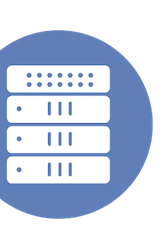|
|
This video is part of the appearance, “VMware by Broadcom Presents at AI Field Day 6“. It was recorded as part of AI Field Day 6 at 10:00-12:00 on January 29, 2025.
Watch on YouTube
Watch on Vimeo
Overview of why customers are choosing VMware Private AI and popular enterprise use cases we are seeing in the field. Tasha Drew’s presentation at AI Field Day 6 highlighted three key reasons driving the adoption of VMware Private AI. First, she addressed the often-overlooked issue of GPU underutilization. Data from UC Berkeley’s Sky Computing Lab, corroborated by VMware’s internal findings, demonstrated that current deployment practices, such as dedicating one GPU per model, lead to significant inefficiency due to inconsistent inference workload patterns. This underutilization is exacerbated by a phenomenon Drew termed “GPU hoarding,” where teams within organizations hoard their allocated GPUs, fearing resource sharing. VMware Private AI addresses this through intelligent workload scheduling and resource pooling, maximizing GPU utilization and enabling resource sharing across different teams and priorities.
The second driver for private AI adoption is cost. Drew presented data indicating a dramatic increase in cloud spending driven by AI workloads, often leading to budget reallocation and project cancellations. This high cost is attributed to various factors including platform fees, data security, infrastructure expenses, and the cost of upskilling staff to handle cloud-based AI tools. In contrast, VMware Private AI offers a more predictable and potentially lower total cost of ownership (TCO) by optimizing resource usage within the enterprise’s existing infrastructure. The presentation referenced an IDC white paper showing that a significant percentage of enterprises perceive on-premise AI solutions as equally or less expensive than cloud-based alternatives, primarily due to the decreased infrastructure and service costs.
Finally, Drew emphasized the critical role of model governance in driving the shift towards private AI. As enterprises embrace generative AI and train models on proprietary data and intellectual property (IP), concerns around data sensitivity and security become paramount. VMware Private AI tackles these concerns by providing robust control mechanisms such as role-based access control (RBAC) to regulate model access and ensure compliance with data protection regulations. While the technical complexities of managing access control within embedding and vector databases are acknowledged, Drew highlighted ongoing development efforts to integrate comprehensive security measures at both the database and application output levels. Overall, the presentation positioned VMware Private AI as a comprehensive solution addressing the challenges of cost, efficiency, and security in deploying and managing enterprise AI workloads.
Personnel: Tasha Drew









